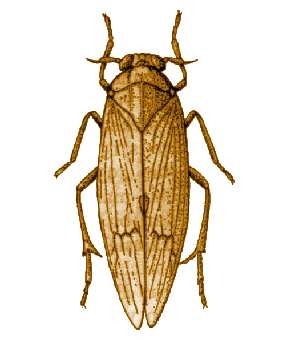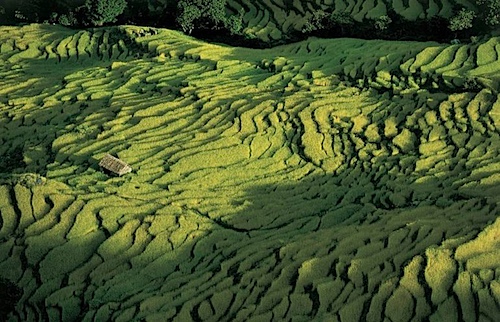The Economist had special report on the sea last week, aptly entitled “The tragedy of the sea.” It is a couple of pages long. Read it. After you read my summary and call for action.
The oceans are a common good. Hence we extract from it as much as we can, as quickly as we can, and then dump our trash in it. There is plastic floating everywhere. And we have all but wiped out the large predator fish (cod, tuna, sharks…) that we like to eat so much. We are the main predator now, and a voracious one at that. We have kept the catch from declining with much improved fishing technologies. But that is making things worse in the long run. The remaining fish, lower in the food chain, are getting smaller and smaller. We get more ‘dead zones’, which are quite alive actually, but with slimy and more simple organisms like jellyfish — this is called ‘reverse evolution’. And now we have started big time krill fishing to further undermine life in the oceans. Who knows what that will do. But it is quite likely that fisheries — and perhaps ocean life in general — will collapse.
Some species have already collapsed, but much worse is coming our way. There are many causes. And there are simple solutions. We have to stop dumping our garbage, quit certain fishing methods, we have to manage fish stock rationally, and we should simply eat less fish. Ok, there is fish farming to help. But that ain’t particularly great either (like catching mackerel to raise tuna). Farmed shell fish is probably best. Low in the food chain, and they feed on algae.
Some countries are actually trying to be responsible. For example Iceland and Norway, were fisheries are an important source of income. The European Union is perhaps worst of all. In the EU, the fish business appears to have — improbable as this may seem — an even more disproportionate political influence than the agricultural sector. So the quota are always set too high. And then everybody cheats and catches even more. All that heavily subsidized of course, with most money going to the worst offenders: the Spanish fishermen. ((It seems that the majority of the Spanish fishermen are Basque. I wonder if this these subsidies are an attempt to appease the Basques? Are we killing the oceans to undermine ETA?))
There is not much fish left in European waters, so now they are buying up fishing rights in Africa; and happily deploying illegal fishing methods, and killing massive amounts of ‘by-catch’ such as turtles.
Meanwhile, the EU funds development aid to teach local fisher folk about sustainable fishing. But when the fish is gone, what can they do? Fortunately, in Somalia the fishermen were rather inventive. But who are the real pirates?
Where is the Big Environmental Activism in all this? Greenpeace used to work against nuclear waste dumping and whale killing. They still talk about it, but it seems they have diversified. Perhaps it is not part of their business model to attempt to make their rich constituency change their own behavior. It is perhaps easier to work on scaring us about GMO crops, and the big bad multinationals behind it.
The impeding death of the oceans should be of much more concern.
We need aggressive action. I propose a EU-wide fish-fast. Can we all boycott the EU fishing industry for a year? That should slow things down. ((But don’t replace fish with meat, just with grains, beans and veggies.)) And let’s choose a specific target. Spanish fishers seem to be the worst in the world. So let’s boycott Spain. We can make it the new South Africa. Stop drinking sherry and rioja. Don’t go to the beach ((Sic. Ed.)) of Torremolinos this summer. If you must go to Spain, perhaps because you are a bullfighting aficionado, or to toss goats from a tower, do not eat calamares or other sea creatures. The Spanish are in a bad economic downturn, so we can force them to their knees if we act quickly and decisively. After Spain backs down we’ll take the next target. We have a long list.
 Spraying is what many farmers do, to the detriment of their health and environment. It also makes the pest problem worse. Why? Because pesticides also kill the pests’ natural enemies, such as spiders. So you need to spray again, and again. Until the pests are pesticide resistant. This has led to huge outbreaks of brown plant hopper, like in Indonesia in the 1980s, which only stopped after most pesticides were banned. ((Brown plant hopper image from
Spraying is what many farmers do, to the detriment of their health and environment. It also makes the pest problem worse. Why? Because pesticides also kill the pests’ natural enemies, such as spiders. So you need to spray again, and again. Until the pests are pesticide resistant. This has led to huge outbreaks of brown plant hopper, like in Indonesia in the 1980s, which only stopped after most pesticides were banned. ((Brown plant hopper image from  Working together, the farmers and their advisers are tackling these issues. They have introduced new varieties, with a label that mentions the role of PPB in their development. And they have re-established specialist seed farmers who supply seed for all in a collective framework. The big stumbling block now is European legislation.
Working together, the farmers and their advisers are tackling these issues. They have introduced new varieties, with a label that mentions the role of PPB in their development. And they have re-established specialist seed farmers who supply seed for all in a collective framework. The big stumbling block now is European legislation.